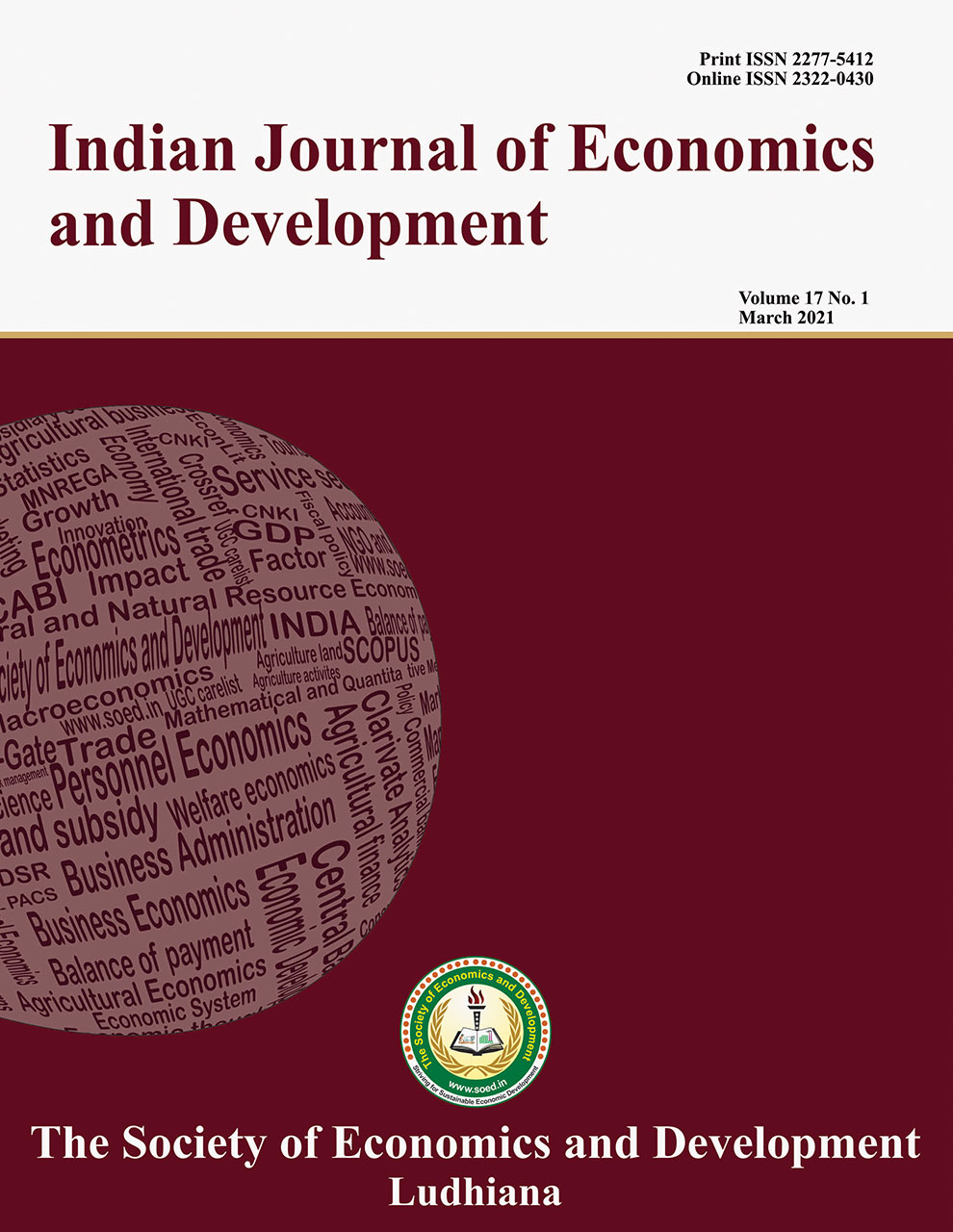Analysis of Remittances by Internal Migrants in Urban Informal Sector in Punjab

Price: ₹ 500
Author: Pushpa Devi1 and Neena Malhotra2*
Author Address: 1Assistant Professor (Economics), Department of Laws and 2Professor, Punjab School of Economics
Keywords: Internal migration, poverty reduction, remittances.
JEL Codes: J01, J61, P46, R23.
Abstract
The results revealed that as the duration of the migration period increased, the level of remittances decreased because these migrants permanently settled in Punjab. The remittances were mainly used by the family for purchasing food, repayment of debts, medical treatment, marriages, children’s education, purchasing agricultural inputs, construction of houses, etc. The results of the Logistic Regression and Probit Regression Analysis showed that Migrant workers living alone and unmarried migrant workers showed a positive and significant relationship with the decision to remit in both the model. The decision to send money back home was strongly related to the fact of whether migrant workers had migrated alone or with their families. Family size had a significant positive effect on the decision to remit. The income variable had a positive sign, and its coefficient is significant in the probit model whereas in the logit model showed a positive and non-significant relationship with the decision to remit. The results of the Tobit Model showed that migrant workers living alone, unmarried workers, large family size migrant workers were more likely to remit than their counterparts, ceteris paribus. The incidence of remitting and the size of remitted are increased with the income in Punjab and decrease with the duration of migration.
Description
Indian Journal of Economics and Development
Volume 16 No. 1, 2020, 89-96
DOI: https://doi.org/10.35716/ijed/19138
Indexed in Clarivate Analytics (ESCI) of WoS
NAAS Score: 4.82
UGC Approved: UGC Care List Group II
Pushpa Devi1 and Neena Malhotra2*
1Assistant Professor (Economics), Department of Laws and 2Professor, Punjab School of Economics
Guru Nanak Dev University, Amritsar-143005
*Corresponding author’s email: malhotradrneena@gmail.com



